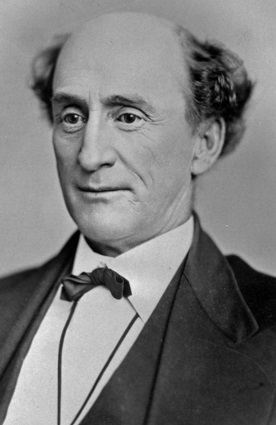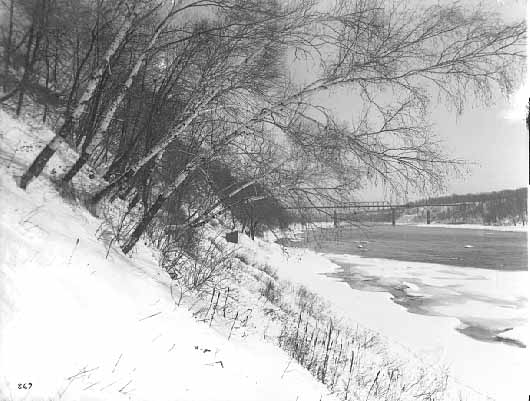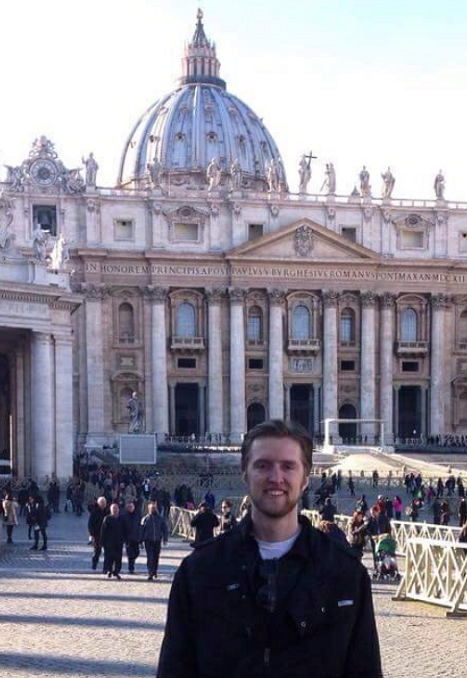New book "A People's History of the Seward Neighborhood" includes the story of Falls City
 Sunday, January 27, 2019 at 4:13PM |
Sunday, January 27, 2019 at 4:13PM |  Michael Rainville Jr |
Michael Rainville Jr | Article by Michael Rainville, Jr.
In December of 2018, a new local history book hit the shelves that tells the story of one of Minneapolis’ most vibrant neighborhoods. Included in the 2017 American Planning Association’s “Great Places in America” list, the Seward neighborhood has a very rich history, and their newest publication A People’s History of the Seward Neighborhood unveils the uniqueness of the area. The book chronologically lays out the neighborhood’s history while focusing on the important events and eras, made evident by the chapter headings.

Scattered throughout the book are also very interesting fun stories, such as Falls City: The City That Never Was. The story of Falls City starts back when Fort Snelling was the only non-native settlement on the west side of the Mississippi River from the fort to St. Anthony Falls. As westward expansion grew by the year, the U.S. government decided to allow the settling of the west side of the river near Fort Snelling. At the time, the Village of St. Anthony was becoming a booming industry town and in the area just across the river lied the wilderness. When settlers began establishing homes and businesses on the west bank, there became a very apparent need to improve infrastructure and transportation, because hauling goods via oxcarts from the river landings in St. Paul to what eventually became Minneapolis was not cutting it.
 Edward Murphy, 1874The first attempt at bringing more commerce to the west bank was done by Edward Murphy. He formed a steamboat company that would traverse the small islands and rapids that occupied the river from Fort Snelling to St. Anthony Falls. Murphy even piloted his flagship steamboat, the Falls City, for several years. His other ambitious plan was to connect both sides of the river gorge just upstream from the current Franklin Avenue Bridge, and in 1857, his bridge was completed. It washed away in a flood just two years later. Oops.
Edward Murphy, 1874The first attempt at bringing more commerce to the west bank was done by Edward Murphy. He formed a steamboat company that would traverse the small islands and rapids that occupied the river from Fort Snelling to St. Anthony Falls. Murphy even piloted his flagship steamboat, the Falls City, for several years. His other ambitious plan was to connect both sides of the river gorge just upstream from the current Franklin Avenue Bridge, and in 1857, his bridge was completed. It washed away in a flood just two years later. Oops.
Around this same time, plans were starting to take shape to build a series of locks and dams to raise the river level and cover up the small islands and rapids, which would make boat travel up to the mills around St. Anthony Falls a walk in the park. The first lock and dam to be built would be located at Meeker Island, but unfortunately it would take 50 years for the government and Army Corps of Engineers to approve its construction. At the time the businesses of the area did not foresee the lengthy delays and also planned warehouses to be built near the dam, which eventually lead to the panning of a small community. The Mississippi River Improvement and Manufacturing Company, the entity that was the mastermind behind these new developments, divided the land near the lock and dam into 600 plots.
There was a lot of expected success from those who invested in this idea, especially those who initially owned the land along the west bank. As word got out about this new town, the mapmakers of the time began including the area in their publications. Falls City was officially on the map. However, at its peak, there were only eight residents. Quickly after the town got up and running, the economy crashed and scared everyone away from this business endeavor. While Falls City never became the thriving river town that its founders envisioned, it still laid the groundwork for city planners to develop that part of Minneapolis and the Seward neighborhood.
 Seward's riverfront facing upstream with the old Franklin Ave. Bridge in the background taken in 1910
Seward's riverfront facing upstream with the old Franklin Ave. Bridge in the background taken in 1910
This story, like others found hidden between the pages of A People’s History of the Seward Neighborhood, offers a glimpse into the past of an area that has been vital to the growth of industry, community, and inclusiveness in Minneapolis. From railroads to Co-ops and Scandinavian’s to East African’s, this book embraces the many identities that have left their mark on the neighborhood. If you’re like me and are always looking to further your knowledge on local history, this book is a must need for your bookshelf.
- - - - - - - - - - - - - - - - - - - - - - - - - - - - - - - - - - - - - - - - - - - - - - - - - - - - - -
 About Michael Rainville, Jr.
About Michael Rainville, Jr.
A 6th generation Minneapolitan, Michael Rainville Jr. received his B.A. in History from the University of St. Thomas, and is currently enrolled in their M.A. in Art History and Certificate in Museum Studies programs.
Michael is also a lead guide at Mobile Entertainment LLC, giving Segway tours of the Minneapolis riverfront for 6+ years.
He can be reached at mrainvillejr@comcast.net.
